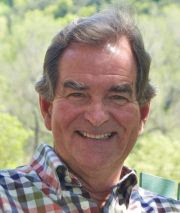While this question was central to an unforgettable scene from the “Marathon Man”, it remains central to many things going on about us. The nuclear reactors in Japan, our radiation monitoring systems, and sleepy air traffic controllers have made the news in the past week alone. The list could go on for a good while with one common thread: are we as safe as those “in the know” purport? The answer, on the other hand, is short and unsweetened: no.
Surprised? I can’t, for the life of me, understand why that might be. Think back to any household chore that involves power tools or ladders. Hopefully, before embarking on this simple task, a plan is thought out to ensure no broken bones or missing appendages at the completion of said project. Unfortunately, most plans have hidden flaws that arise at the most inopportune moment and sometime result in the very things we tried to prevent.
So the only difference between our foray onto the roof (and into the Emergency Room)and the more serious scenarios previously mentioned is the scope of the effort and the greater ramifications of those hidden flaws. How can one guarantee that a nuclear reactor and its surrounding area is absolutely safe? One can only plan for known problems using known construction techniques. Fast forward a few decades after new problems have been identified and new construction techniques have evolved. It’s too late to re-build our facility so the best we can do is continue whistling through the graveyard while employing some sort of stop-gap measures. The same applies to earthquake-proof buildings or anything else followed by “-proof” in the press release.
A few days ago, a controller fell asleep on duty at Washington’s Reagan Airport. He was the only one on duty despite concerns voiced by controllers and their union. Why? Because it was cheaper and, after all, nothing had happened like this before. So now we’ll have an investigation and put two controllers on duty for graveyard shifts. I can remember tales of flight crews going to sleep in the cockpit and overflying their destination. So much for multiple folks solving a problem, huh? No, nothing is absolutely safe and most of us realize this fact every morning as we climb out of bed. As soon as our feet hit the floor, we’re taking on some sort of risk.
The nature of a disaster, be it natural or man-made, is bad enough, but insult is added to injury when our experts, CEO’s, and political leaders take to the podium to “reassure” us that all is under control. Why is it, then, that they seem to regularly tell us that yesterday was worse than thought while guaranteeing tomorrow to be better than today? And why do we listen? Well, we don’t seem to be listening with much attention as the credibility of those we look to for answers erodes. Yet they continue on, oblivious to the fact that their constituents can take hard truth and, in fact, prefer it over fanciful best-case scenarios that fail to materialize.
It was recently reported that almost half of the radiation monitors on the West Coast are not working. The EPA claims this is due to “quality review”. What the hell does that mean? At a time when radiation measurement is highly desirable, we continue to hear that all is well. Remember the old “Fool me once...” adage? (No, not the one W. mangled. The real one.) Somewhere in these speeches and forecasts lies truth and sensible avenues of recourse. How to separate the grains of wheat from the chaff, though, is the real challenge. And, as events become more complex, we realize that most of us aren’t smart enough to figure it out for ourselves. No, we’re still up on that roof with a broken (or missing) finger wishing we had anchored the ladder better. So maybe, we think, we’re better off not believing anything anybody says. It’s safer, right?
Whether or not we continue our nuclear power agenda or not, we must all realize that any great undertaking has risks that are in keeping with the rewards. A solution to the nuclear problem is elusive, to say the least. And convincing the powers-that-be that honesty is the best policy may be a pipe dream. Regarding the controller staffing, though, I can offer a way to avoid these lapses of consciousness: take that lone controller and give him a pair of safety glasses. Then put a carrion bird into the tower cab with him. Vultures and such are only interested in dead things so, should our controller nod off, the condor will start in on dinner. That should wake anyone up, assuming they could fall asleep in the first place! The glasses? Everyone knows that the eyes are usually the first course.



No comments:
Post a Comment